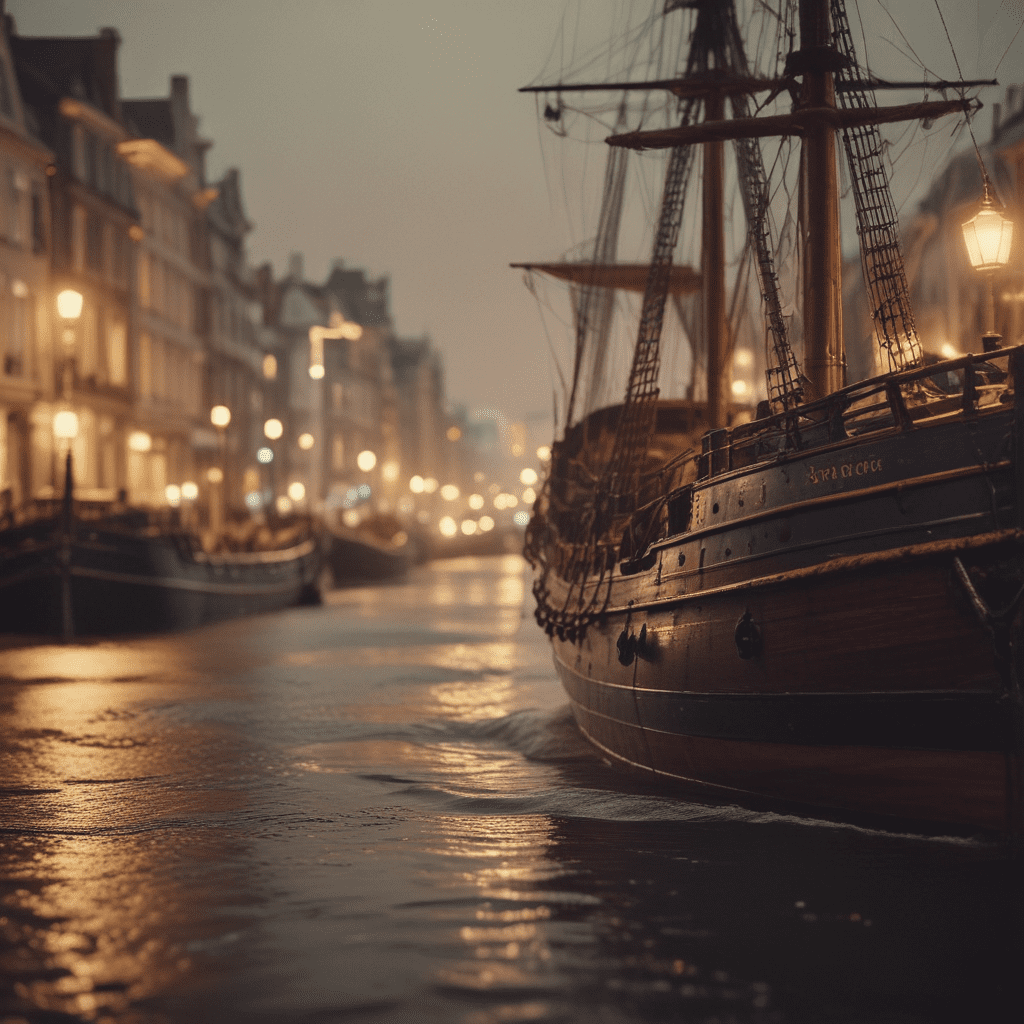
Unveiling the Maritime History of Ostend
1. A Coastal Gem: The Rise and Fall of Ostend's Port
Nestled on the Belgian coast, Ostend's history is intricately woven with the sea. Its strategic location has shaped its destiny, transforming it from a humble fishing village into a bustling port city and back again. This section delves into the fascinating rise and fall of Ostend's port, tracing its journey from humble beginnings to a thriving commercial center and its eventual decline due to changing political and economic landscapes.
2. From Humble Beginnings to a Thriving Hub: The Story of Ostend's Maritime Trade
Ostend's maritime story begins with its emergence as a modest fishing community. This small-scale industry gradually evolved into a vibrant trade network, connecting the city with distant shores. This section explores the evolution of Ostend's maritime trade, from its early days as a regional fishing port to its peak as a prominent international trading hub. The rise of prominent trading companies, the establishment of trade routes, and the impact of major historical events will be examined to paint a vivid picture of Ostend's bustling commercial past.
3. Facing the Waves: Ostend's Naval Battles and Maritime Conflicts
The strategic importance of Ostend's port has inevitably entangled it in several maritime conflicts throughout history. This section explores the city's role in major naval battles and skirmishes, highlighting the bravery and resilience of its people in the face of adversity. From the fierce defense against Spanish forces during the Eighty Years' War to the tragic losses of World War II, Ostend's maritime history is interwoven with tales of battles, sieges, and the indomitable spirit of its inhabitants.
4. Beyond Commerce: The Allure of Ostend's Fishing Industry
While Ostend's port may have been the epicenter of its maritime activities, the city's fishing industry has always held a significant place in its cultural and economic fabric. This section delves into the rich history of Ostend's fishing heritage, exploring the traditional fishing techniques, the types of fish caught, and the cultural significance of this industry for the local community. The challenges faced by the industry in the modern era will also be addressed, along with the efforts to preserve this vital part of Ostend's identity.
5. From Sails to Steam: Technological Advancements and the Evolution of Ostend's Maritime Scene
Throughout history, technological advancements have continuously reshaped Ostend's maritime landscape. This section traces the evolution of maritime technology in Ostend, from the era of sail-powered vessels to the introduction of steamships and modern cargo ships. The impact of these changes on the city's port, trade, and overall maritime industry will be analyzed, illustrating how technological progress has driven Ostend's maritime development over the centuries.
6. A Haven for Travelers: The Growth of Ostend as a Passenger Port
Beyond its bustling commercial activities, Ostend also emerged as a prominent passenger port, attracting travelers from near and far. This section explores the development of Ostend as a passenger hub, from the early days of ferry services to its transformation into a popular tourist destination. The impact of passenger travel on the city's economy and culture will be examined, along with the evolution of its port facilities and the changing demographics of its visitors.
7. From Cargo to Culture: The Transformation of Ostend's Maritime Landscape
In recent decades, Ostend's maritime landscape has undergone a significant transformation. While its port continues to handle cargo, the city has embraced its rich maritime history and cultural heritage. This section delves into the various initiatives that have revitalized Ostend's waterfront, including the development of museums, cultural centers, and recreational areas. The impact of these transformations on the city's economy and tourism industry will be analyzed, showcasing how Ostend has successfully transitioned from an industrial port to a vibrant cultural destination.
8. Echoes of the Past: Preserving Ostend's Maritime Heritage
Ostend's maritime heritage is a source of great pride for its inhabitants and a captivating attraction for visitors. This section explores the various efforts to preserve and showcase the city's rich maritime past. The role of museums, historical societies, and restoration projects will be highlighted, demonstrating the importance of preserving Ostend's maritime legacy for future generations.
9. Gazing into the Future: The Prospects of Ostend's Maritime Development
As Ostend looks towards the future, its maritime development holds immense potential. This section explores the challenges and opportunities that lie ahead for the city's port, including the increasing importance of sustainable shipping practices, the growth of the cruise industry, and the potential for further tourism development. By analyzing these factors, a vision for the future of Ostend's maritime landscape can be envisioned.
10. A Journey Through Time: Exploring Ostend's Maritime Museums and Historical Sites
For visitors interested in delving deeper into Ostend's maritime history, the city offers a wealth of museums and historical sites to explore. This section provides an overview of some of the must-visit attractions, including the Mercator, a museum ship offering insights into the city's seafaring past, and the Fort Napoleon, a reminder of Ostend's role in military conflicts. By visiting these sites, visitors can embark on a captivating journey through time and gain a deeper appreciation for Ostend's rich maritime legacy.
FAQ:
Q: What was the main reason for the decline of Ostend's port as a major commercial center?
A: The decline of Ostend's port was primarily due to changing political and economic landscapes. The rise of Antwerp as a major port city and the increasing prominence of other European ports led to a decrease in trade activity in Ostend.
Q: What are some of the most popular tourist attractions in Ostend related to its maritime history?
A: Some of the popular tourist attractions in Ostend include:
- The Mercator, a museum ship offering insights into the city's seafaring past.
- The Fort Napoleon, a reminder of Ostend's role in military conflicts.
- The Sea Life Centre, showcasing marine life from the Belgian coast.
- The Ostend Maritime Museum, providing a comprehensive overview of the city's maritime history.
Q: What are the prospects for the future development of Ostend's maritime industry?
A: Ostend's maritime industry has promising potential for future development, with a focus on sustainable shipping practices, growth in the cruise industry, and further tourism expansion.

